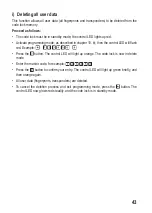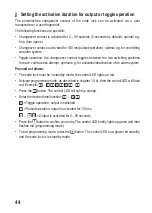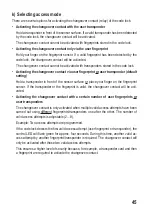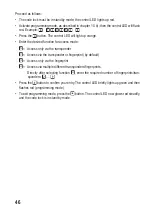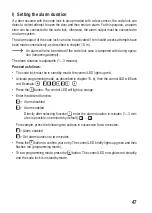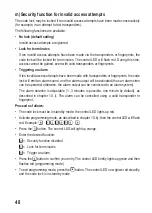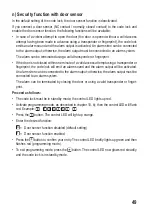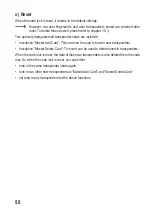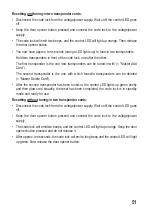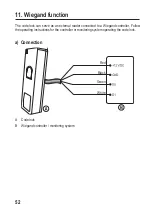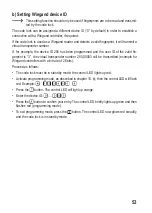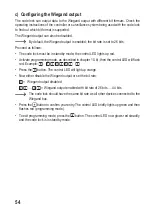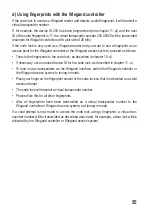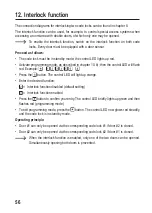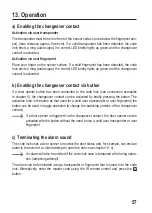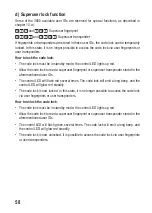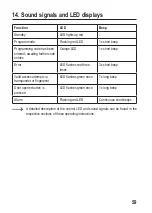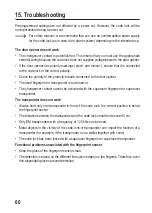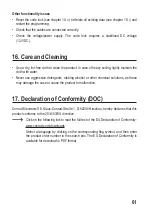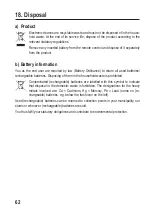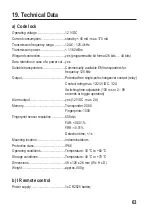
13. Operation
a) Enabling the changeover contact
Activation via user transponder
The transponder must be held in front of the sensor surface (area below the fingerprint sen
-
sor) (max. distance approx. three cm). If a valid transponder has been detected, the code
lock emits a long audio signal, the control LED briefly lights up green and the changeover
contact is activated.
Activation via user fingerprint
Place your finger on the sensor surface. If a valid fingerprint has been detected, the code
lock emits a long audio signal, the control LED briefly lights up green and the changeover
contact is activated.
b) Enabling the changeover contact via button
If a door opener button has been connected to the code lock (see connection examples
in chapter 8), the changeover contact can be activated by briefly pressing the button. The
activation time is the same as that used for a valid user transponder or user fingerprint (the
button can be used in toggle operation to change the switching position of the changeover
contact).
If a door opener is triggered via the changeover contact, the door opener can be
activated with the button without the need to use a valid user transponder or user
fingerprint.
c) Terminating the alarm sound
The code lock uses a door sensor to monitor the door status and, for example, can emit an
alarm in the event of a violent attempt to open the door; see chapter 10. n).
An alarm will also be emitted if the code lock case is tampered with during opera-
tion (tampering attempt).
The alarm can be terminated using a transponder or fingerprint that is tuned-in to the code
lock. Alternatively, enter the master code using the IR remote control and press the
button.
57

